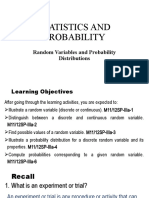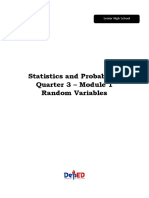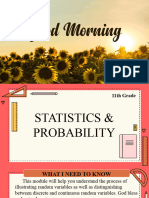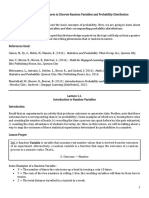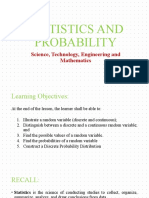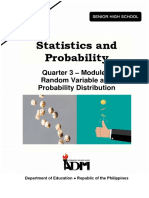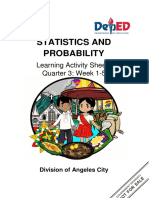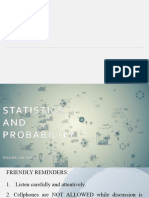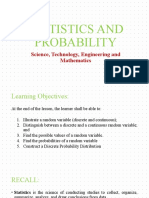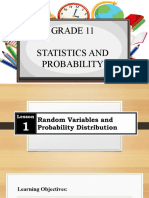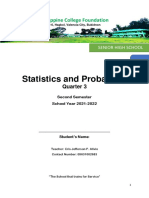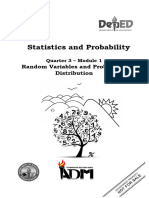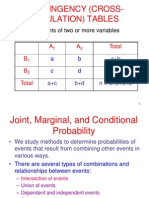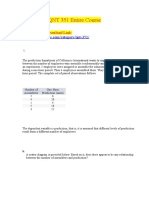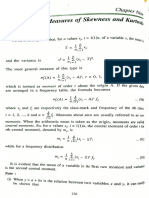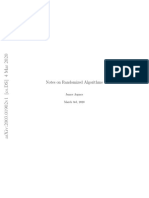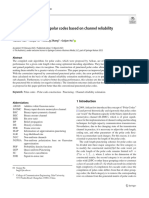0% found this document useful (0 votes)
18 views22 pagesRandom Variables and Probability Distribution
This document discusses random variables and probability distributions. It begins by defining a random variable as a numerical quantity assigned to the outcomes of a chance experiment. Random variables can take discrete or continuous sets of possible values. The document provides examples of defining random variables for different chance experiments and calculating their possible values. It distinguishes between discrete and continuous random variables. Finally, it discusses representing the probabilities of different outcomes using probability distributions and calculating the mean and variance of discrete random variables.
Uploaded by
ڑحء دڑحسCopyright
© © All Rights Reserved
We take content rights seriously. If you suspect this is your content, claim it here.
Available Formats
Download as PPTX, PDF, TXT or read online on Scribd
0% found this document useful (0 votes)
18 views22 pagesRandom Variables and Probability Distribution
This document discusses random variables and probability distributions. It begins by defining a random variable as a numerical quantity assigned to the outcomes of a chance experiment. Random variables can take discrete or continuous sets of possible values. The document provides examples of defining random variables for different chance experiments and calculating their possible values. It distinguishes between discrete and continuous random variables. Finally, it discusses representing the probabilities of different outcomes using probability distributions and calculating the mean and variance of discrete random variables.
Uploaded by
ڑحء دڑحسCopyright
© © All Rights Reserved
We take content rights seriously. If you suspect this is your content, claim it here.
Available Formats
Download as PPTX, PDF, TXT or read online on Scribd
/ 22
